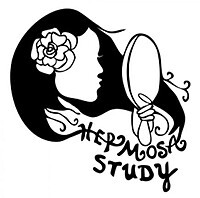The average woman in the US uses about 12 personal care and cosmetic products daily. The average man uses about 6. Many of these products contain endocrine disrupting chemicals (EDCs) including phthalates, parabens, and triclosan. These EDCs are of concern because of their potential links to cancer, infertility, and developmental harm to children.
 To investigate these exposures and reduce levels in a population of adolescent teens, the Health and Environmental Research in Make-up Of Salinas Adolescents project or the HERMOSA Study was initiated. In Spanish, “hermosa” means “beautiful.”
To investigate these exposures and reduce levels in a population of adolescent teens, the Health and Environmental Research in Make-up Of Salinas Adolescents project or the HERMOSA Study was initiated. In Spanish, “hermosa” means “beautiful.”
Goals of the HERMOSA Study
1) Conduct an intervention study to determine if providing low-chemical personal care products can reduce exposure levels to four EDCs; and
2) Reduce the exposure to EDCs in Latina teens through a multi-pronged advocacy strategy.
On this call, Dr. Kim Harley from the Maternal and Child Health Program at UC Berkeley's School of Public Health and Associate Director of the Center for Environmental Research and Children's Health (CERCH) discussed the HERMOSA Study, how teenage girls are exposed to endocrine disruptors in make-up and personal care products, and whether or not they can lower their exposure by using lower chemical products.
The HERMOSA Study is a joint effort between UC Berkeley, Clinica de Salud del Valle de Salinas, and a team of youth researchers from the CHAMACOS Youth Community Council.
Featured Speaker
 Kim Harley, PhD, MPH. Dr. Harley is a faculty member in the Maternal and Child Health Program at UC Berkeley's School of Public Health and Associate Director of the Center for Environmental Research and Children's Health (CERCH). She is a reproductive epidemiologist whose research focuses on endocrine-disrupting chemicals and health and development, including associations with fertility, timing of puberty, obesity, and neurodevelopment. Her primary focus is on exposure to common hormone-disrupting chemicals, including those found in personal care products, plastics, flame retardants in furniture, and pesticides on food. Dr. Harley is the co-Director of the HERMOSA Project which works with Latina adolescents to determine their exposure to hormone-disrupting chemicals in cosmetics and beauty products. She is also the Associate Director of the CHAMACOS Study, a 15-year longitudinal cohort study examining chemical exposures to immigrant farmworker women and their children living in the Salinas Valley.
Kim Harley, PhD, MPH. Dr. Harley is a faculty member in the Maternal and Child Health Program at UC Berkeley's School of Public Health and Associate Director of the Center for Environmental Research and Children's Health (CERCH). She is a reproductive epidemiologist whose research focuses on endocrine-disrupting chemicals and health and development, including associations with fertility, timing of puberty, obesity, and neurodevelopment. Her primary focus is on exposure to common hormone-disrupting chemicals, including those found in personal care products, plastics, flame retardants in furniture, and pesticides on food. Dr. Harley is the co-Director of the HERMOSA Project which works with Latina adolescents to determine their exposure to hormone-disrupting chemicals in cosmetics and beauty products. She is also the Associate Director of the CHAMACOS Study, a 15-year longitudinal cohort study examining chemical exposures to immigrant farmworker women and their children living in the Salinas Valley.
This teleconference call is one in a monthly series sponsored by the Collaborative on Health and the Environment’s EDC Strategies Group. The CHE EDC Strategies Group is chaired by Carol Kwiatkowski (TEDX), Sharyle Patton (Commonweal), and Genon Jensen (HEAL). To see a full list of past calls in the series and listen to the MP3 recordings please visit the CHE Endocrine Distrupting Chemicals webpage.
The call was moderated by Sharyle Patton, Director of Commonweal's Biomonitoring Resource Center.
